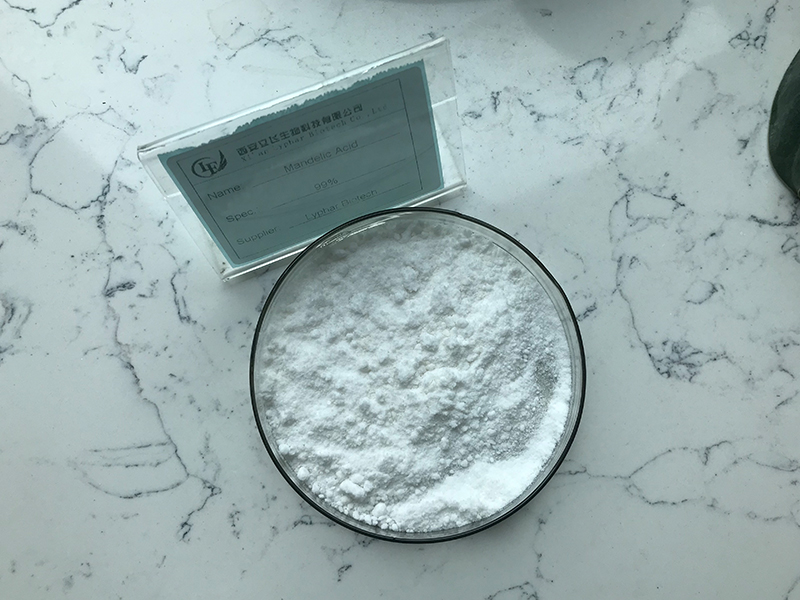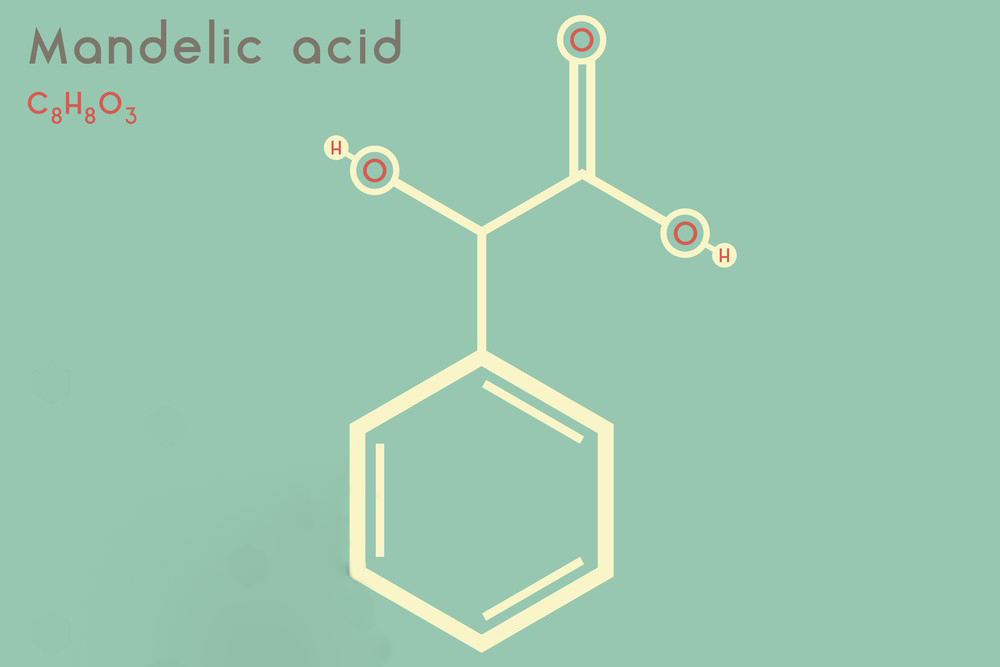Mandelic acid (C₆H₅CH(OH)COOH) is an aromatic alpha-hydroxy acid (AHA) commonly used in chemical synthesis, pharmaceuticals, and cosmetics. It can be prepared through several methods, with one of the most common being the hydrolysis of mandelonitrile. Below is a general procedure for the preparation of mandelic acid:
Materials Required:
- Benzaldehyde (C₆H₅CHO)
- Sodium or Potassium Cyanide (NaCN or KCN)
- Sulfuric acid (H₂SO₄) or Hydrochloric acid (HCl)
- Water (H₂O)
- Organic solvents (e.g., ether)
- Ice bath

Procedure:
1.Formation of Mandelonitrile:
- In a flask, dissolve sodium cyanide (NaCN) in water to create an aqueous solution. (Caution: Sodium cyanide is highly toxic. Handle with care.)
- Slowly add benzaldehyde to the cyanide solution while stirring vigorously. This step forms mandelonitrile as an intermediate via a nucleophilic addition reaction.
C6H5CHO+HCN→C6H5CH(OH)CN
2.Hydrolysis of Mandelonitrile:
- Carefully add dilute sulfuric acid or hydrochloric acid to the mandelonitrile solution. This will hydrolyze the nitrile group (-CN) to form mandelic acid.
C6H5CH(OH)CN+2H2O→C6H5CH(OH)COOH+NH3
3.Isolation of Mandelic Acid:
- Once the hydrolysis reaction is complete, the mandelic acid formed will precipitate out of the solution. You can filter the solid mandelic acid.
- The crude product can be purified by recrystallization, typically using a solvent like ether or ethanol to obtain pure mandelic acid crystals.
4.Drying:
- After recrystallization, dry the mandelic acid thoroughly.

Safety Precautions:
- Cyanide compounds are extremely toxic; proper safety measures such as wearing gloves, goggles, and working in a fume hood are mandatory.
- Sulfuric acid or hydrochloric acid are highly corrosive and should be handled with care.
This method typically yields racemic mandelic acid (a mixture of both enantiomers).
For the preparation of enantiomerically pure mandelic acid, additional steps such as resolution of the racemic mixture would be required.
